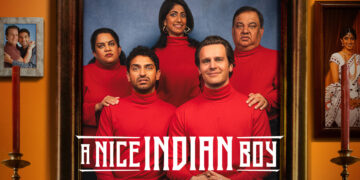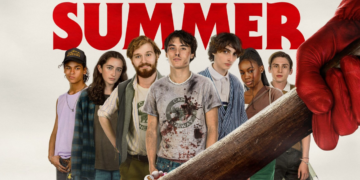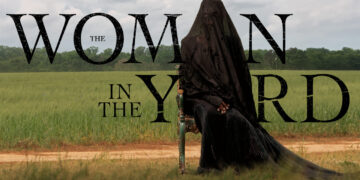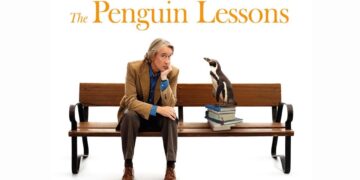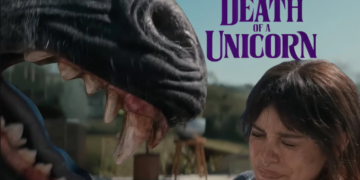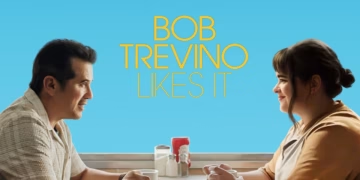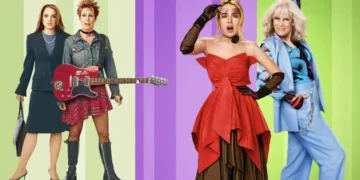Trigger Warning: This review discusses themes of grief, depression, and suicidal ideation. Viewer discretion is advised.
A mother’s love is as fierce as it is sacrificial—unyielding, instinctive, a force that endures even in the face of death. She is tasked with the impossible: to nurture and protect, to give endlessly of herself. But what happens when the weight of grief consumes her? When she can no longer care for the children she brought into the world?
Blumhouse, alongside director Jaume Collet-Serra and writer Sam Stefanak, brings this harrowing truth to life in The Woman in the Yard, a psychological horror-thriller that follows Ramona (Danielle Deadwyler), a widowed single mother left emotionally and physically shattered after a tragic car accident that claimed the life of her husband (Russell Hornsby).
Ramona’s body bears the scars of survival, a broken leg rendering her unable to care for her children but it is the unseen wounds that cut deepest. Depression has hollowed her out, leaving her eldest son, Taylor (Peyton Jackson), to shoulder responsibilities far beyond his years. He becomes the protector, the provider, the reluctant head of a household unraveling at the seams. His younger sister, Annie (Estella Kahiha), clings to childhood innocence, yet even she cannot escape the suffocating weight of absence. But children, no matter how strong, still need their mothers.
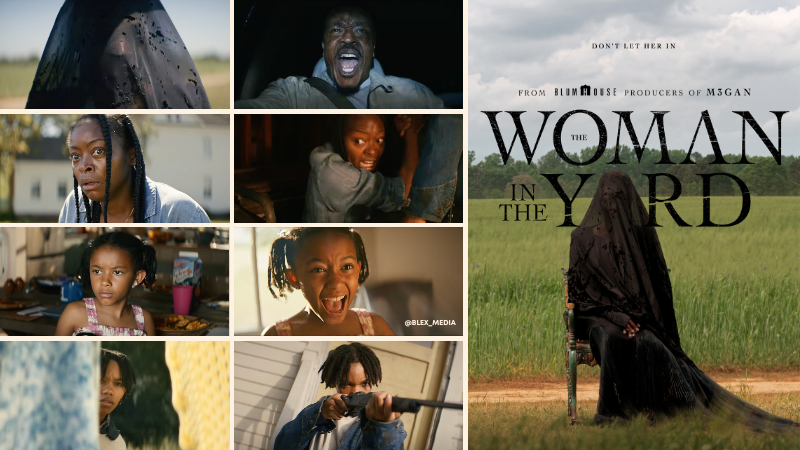
The film never specifies how much time has passed since the accident, but the wrecked car, which sits just a few feet outside in the humid, stagnant atmosphere, suggests a summer without structure, where days stretch endlessly. Through fractured memories, we catch glimpses of the life Ramona once dreamed of.
In a recurring flashback, her husband envisions the home they never had the chance to build: “The house was finished, everything was decorated, the barn was full.” He once asked her, “What would you name the perfect home?”
Now, in the house that was meant to be their future, something unnatural lingers. Grief itself is a ghost, but in The Woman in the Yard, it is not the only presence haunting this fractured family. Ramona exists in a liminal space, suspended between past and present, between duty and despair. The woman, the mother, the wife, and the dreamer she once was has been swallowed by sorrow. Though she breathes, she is barely living.

Her home reflects the ruin of her psyche: walls stripped of color, boxes left unopened, a refrigerator that hums with emptiness. The electricity has been cut, not just from the house but from her very being. Once composed and elegant, Ramona now drifts through the days in unkempt braids and timeworn pajamas. Yet, despite her absence of presence, her love for her children has not withered. It is simply trapped beneath the weight of grief and suffocating in the quiet.
Annie, in her innocent longing, whispers the name of the man they have lost: “Daddy would know what to do.” The words strike like a knife, unraveling Ramona’s fragile composure. “I know Mom hasn’t been Mom lately, but I’m here,” Taylor assures her, but it is not a son’s responsibility to bear the weight of a mother’s grief. Every time Annie gets hurt or something goes wrong, she lashes out: “Can you keep an eye on her?” as if it’s his job to parent his sister.
Then, the woman in the yard appears. She is a figure draped in black, seated with an eerie serenity in an ornate cast-iron chair. Only her hands are visible, gently folded and stained by blood. She does not move, and yet, with each passing moment, she seems closer. The children call her “Mrs. Weirdo Funeral Lady,” but Ramona knows better. She is something else entirely.

When Ramona approaches her, demanding answers, the woman responds with quiet inevitability: “You called, and I came.” The horror of The Woman in the Yard is not merely the presence of an intruder, but the realization that she has always been there. This woman, this entity, knows Ramona’s grief intimately. She knows of the prayers whispered in the dark, the silent pleas for deliverance. “I can’t tell you how long I’ve waited to see that gun in your hand,” she tells Ramona. “I’m here to help you, like you asked me to. Every day, you pray for the strength. You threw away all the bullets except for one.”
It is in this moment that the true nature of the film unfurls: the woman in the yard is not an external force, but the manifestation of Ramona’s deepest despair. She is the whisper in the night that tells her there is only one way to escape. The shadows that rip through the house, the visions of Ramona harming her own children, these are not premonitions but reflections of her greatest fear: that her presence does more harm than good. The destruction of the dog, the chickens, the very life she built, all of it is grief-consuming what remains. “I do everything for the kids, for the dog, for the chickens,” she tells her husband in a memory.
And so, the monster born from her sorrow destroys them first. The film’s brilliance lies in its quiet, devastating symbolism. When the power is cut, Ramona and her children hide, and she urges them: “Cover all the lights.” A chilling metaphor, the darkness of her mind demands that she extinguish the light. Yet, when the woman in the yard vanishes, the lights flicker back to life. A sign that, perhaps, hope still lingers and she chooses life instead of the permanence of death.
In the final moments, Taylor asks: “Will she come back?” Ramona’s reply is simple, yet profound: “Not today. But if she ever does, we’ll be ready this time.”
The Woman in the Yard is not a horror film in the traditional sense. It does not rely on cheap scares or grotesque imagery. Instead, it is a meditation on grief, on the insidious nature of depression, and on the quiet terror of losing oneself to the abyss. It is a portrait of a mother haunted not by a ghost, but by the weight of her own sorrow.
The performances from Danielle Deadwyler, Okwui Okpokwasili, Peyton Jackson, Estella Kahiha, and Russell Hornsby are mesmerizing, each one adding another layer to the film’s harrowing emotional landscape. The cinematography is sharp and pristine, enhancing the richness of the storytelling.
This is a film that lingers. A film that speaks in whispers and shadows, in silences that say more than words ever could. It does not offer easy resolutions, nor does it soften its blows. But in the end, it leaves us with a sliver of hope—fragile, flickering, yet defiant in the darkness.




